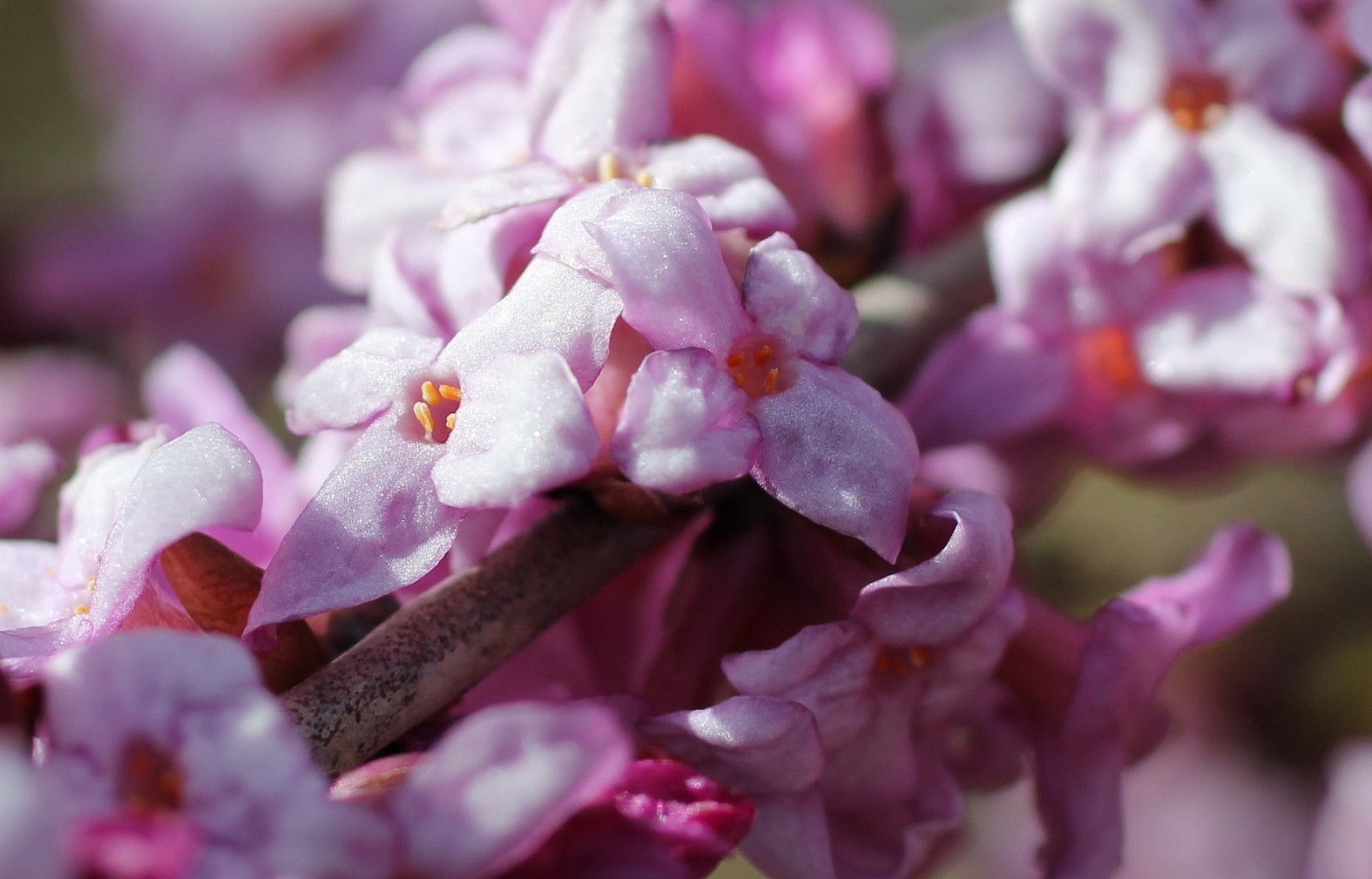
10 fragrant and scented plants
for the garden or the terrace
Contents
If the love story between fragrant plants and gardeners dates back thousands of years, it is because they possess an almost magical power. The flower “that smells good” is unmatched in awakening our senses or tickling our memory to remind us, much like Proust’s madeleine, of precious moments or loved ones.
And when we think of fragrance, the first fragrant flower that comes to mind is often the rose, but it is far from having a monopoly! There are indeed white, yellow, or even purple fragrant flowers for every season and in all plant categories. These fragrant flowers can be grown in a variety of situations: outdoors, in the garden, on a terrace, and even on a balcony to make the most of them, as well as indoors, at home.
And the choices are plentiful! How can one overlook a beautiful scented clematis with its unique flowers, a shower of highly fragrant jasmine flowers, or the enchantment of a white fragrant flower from a gardenia?
To create a fragrant garden, however, note that it is better to avoid overloading the garden with flowers that smell good, as you would only achieve an olfactory cacophony. Instead, plan to distribute the champions of the most powerful scents among neutral plants or to combine various highly fragrant plants, provided they bloom in different seasons.
To this end, discover our selection of 10 plants or flowers among the trees, bushes, and perennial fragrant plants that are the most olfactory to create your fragrant garden!
Daphne
The daphnes (Daphne mezereum, Daphne odora and hybrids) are highly fragrant flowering bushes. Their flowers exude a heady and intoxicating perfume from the end of winter. They are hardy shrubs with evergreen, semi-evergreen or deciduous foliage depending on the species, and some even have decorative foliage. The crown of fragrance goes to Daphne odora ‘Aureomarginata’.
Where to plant them?
Slow-growing, daphnes prefer humus-bearing, cool, well-drained soil in a shaded position. They can be planted individually, in groups, or in borders, preferably not far from the house or in a thoroughfare to enjoy their delightful scents.
Our favourite varieties:
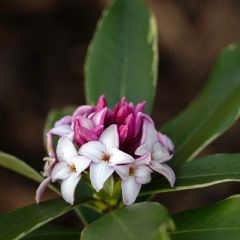
Daphne odora Aureomarginata
- Flowering time March, April
- Height at maturity 1,50 m
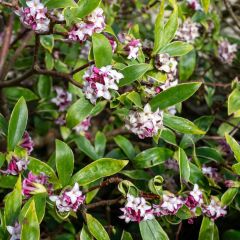
Daphne Perfume Princess
- Flowering time February to May
- Height at maturity 1,20 m
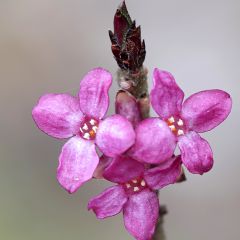
Daphne mezereum var. rubra
- Flowering time March, April
- Height at maturity 1,20 m
To learn everything about daphnes, check out our complete guide: The Daphne: how to plant, cultivate and maintain it.
Read also
Scented geraniums: how to succeed ?Old and English Roses
Ancient roses and English roses are certainly popular among both enthusiasts and collectors. They are highly valued for the quality of their flowering, often double, highly fragrant, with an irresistible charm and pastel colours.
Among the most fragrant, we find:
- Ancient roses:
‘Blanc double de Coubert‘, ‘Yolande d’Aragon’, ‘Fantin Latour‘, ‘Mme Isaak Péreire‘, ‘Blush Noisette‘, ‘Félicité Parmentier’, ‘Jacques Cartier‘, ‘Albertine‘, ‘Reine des Violettes‘, ‘Cuisse de Nymphe‘ or even Rosa x centifolia ‘Muscosa’.
- English roses:
‘Boscobel‘, ‘Sharifa Asma‘, ‘Scepter’d Isle’, ‘Munstead Wood‘ or ‘Sweet Juliet‘ to name just a few.
Roses are undeniably among these fragrant flowers. Depending on the varieties, the fragrances are diverse and varied: myrrh, fruity, musky, sweet… Note that the roses of ‘Sweet Juliet’ possess a powerful lemony fragrance, while Rosa x centifolia, the famous “cabbage rose” used by the cosmetic industry, offers sweet and smooth scents with an intoxicating softness.
Some ancient roses (Alba, Gallica) can, at a pinch, manage with poor soil, but not all roses perform their best unless planted in suitably enriched and watered soil. Avoid overly calcareous soils, which promote chlorosis, or overly heavy soils, which suffocate the roots. Sometimes, they will accept to bloom in partial shade, but generally, they are most comfortable in full sun, even in the South. They can be planted in beds, borders, as solitary specimens, in groups, as ground cover, in large pots, in free hedges, on arches, pergolas, or trained against a wall depending on the varieties.
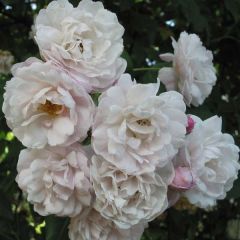
Rosa Blush Noisette - Climbing Rose
- Flowering time July to November
- Height at maturity 1,80 m
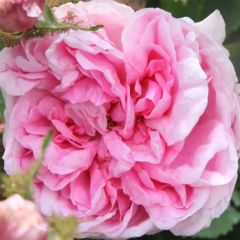
Rosa centifolia Muscosa - White Moss Rose
- Flowering time July, August
- Height at maturity 1,30 m
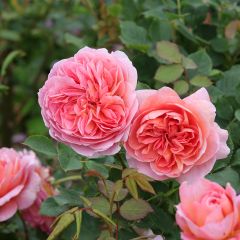
Rosa Boscobel - English Shrub Rose
- Flowering time July to November
- Height at maturity 1 m
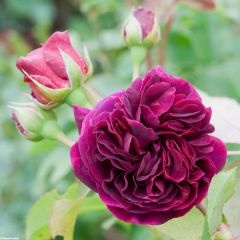
Rosa Munstead Wood
- Flowering time July to November
- Height at maturity 90 cm
Discover other Traditional Roses
View all →Available in 0 sizes
Available in 1 sizes
Available in 2 sizes
Available in 2 sizes
Available in 3 sizes
Available in 2 sizes
Available in 2 sizes
Available in 2 sizes
Available in 2 sizes
Available in 2 sizes
Mexican Orange Blossom
Mexican Orange Blossoms (Choisya ternata) are bushes with very fragrant white flowers. Quite hardy, we love them for their lovely white flowering with a delightful scent reminiscent of orange blossom, their evergreen foliage, and their easy cultivation. The flowers appear between March and May, and sometimes in August and September depending on the varieties. Their foliage is also aromatic.
Where to plant it?
They thrive in all exposures, including dry shade. However, they are more floriferous in the sun, and warmer exposures are highly appreciated in the north of the Loire. They accept all soils as long as they are not too wet in winter. They are ideally planted in hedges, to create a border of bushes or in beds. They fit perfectly in city gardens, on terraces or balconies. They also do very well in pots, particularly the small variety ‘Apple Blossom’.
Our favourite varieties:
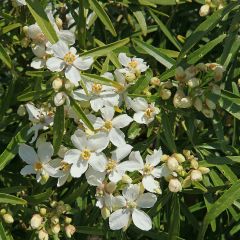
Choisya White Dazzler - Dwarf Mexican Orange
- Flowering time May to October
- Height at maturity 1,20 m
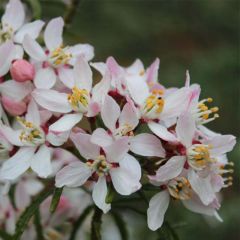
Choisya ternata Apple Blossom - Mexican Orange Blossom
- Flowering time May to October
- Height at maturity 1,20 m
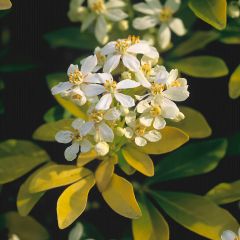
Choisya ternata Sundance - Mexican orange blossom
- Flowering time July to November
- Height at maturity 2 m
Discover our range: Mexican Orange Blossoms.
Read also
Daphne: planting, growing and careThe Honeysuckle
Among the varieties that interest us here for their fragrances, we distinguish the lianas (Lonicera delavayi, Lonicera japonica…) on one hand and the bushes on the other. The Lonicera fragrantissima is the first to bloom in the season. Between January and March, this bushy and semi-evergreen shrub offers small fragrant white flowers, sometimes tinged with raspberry pink, with a rather sweet scent. It is the most fragrant bush honeysuckle.
Climbing honeysuckles perfume the garden on summer evenings. They are voluble semi-evergreen to evergreen climbers depending on the regions. After flowering, fruits appear in the form of small berries. Let collectors of decorative foliage plants rejoice, the Lonicera japonica ‘Aureoreticulata’ and ‘Mint Crisp’ have the particularity of having variegated foliage.
All possess a typical honeysuckle fragrance and the intensity depends on the varieties. For its part, it can be said that Lonicera ‘Marinella’ is among the fragrant plants all year round, well almost, as it produces, from spring to October, without interruption, a multitude of fragrant flowers.
Not demanding, honeysuckles thrive in all soils, in full sun or partial shade. The Lonicera fragrantissima integrates easily into a flowerbed or a wild hedge, while climbing honeysuckles are perfect for colonising a wall, dressing a fence, a trellis or even a pergola. They can also be grown in pots on the terrace, almost within reach of the nose.
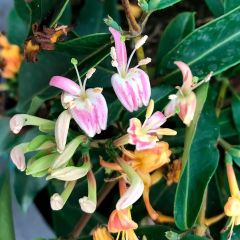
Lonicera henryi 'Marinella' ('Venloma')
- Flowering time June to November
- Height at maturity 3 m
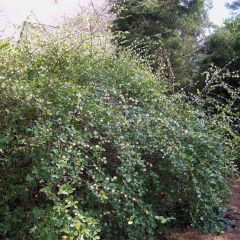
Lonicera fragrantissima - Winter Honeysuckle
- Height at maturity 2,50 m
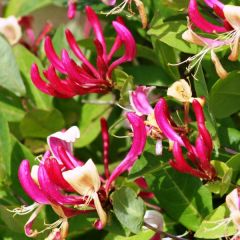
Lonicera periclymenum Fragrant Cloud - European honeysuckle
- Flowering time August to October
- Height at maturity 3 m
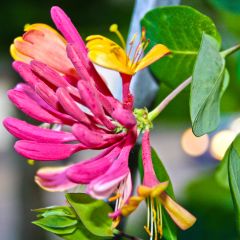
Lonicera x heckrottii Gold Flame - Goldflame Honeysuckle
- Flowering time July to October
- Height at maturity 3 m
To learn all about honeysuckle, check out our file: Honeysuckle: planting, pruning and maintenance.
Fragrant Clematis
The fragrant clematis are significantly less known than the large-flowered hybrid clematis. However, the best of them are truly worth discovering. They are often species with small flowers and varied fragrances.
The Clematis armandii really offers flowers that smell good! It has long, glossy, leathery evergreen foliage. In March – April, the plant is covered in myriads of white or pink flowers. The almond fragrance they emit can be detected from several metres away. The Clematis flammula is deciduous and produces star-shaped flowers that also emit a very strong almond scent, although the intensity varies among varieties. The flowering is late, with flowers blooming in June and sometimes re-blooming in late summer.
Where to plant them?
Clematis prefer light, fertile, cool, and well-drained soils. They thrive with their heads in the sun and their feet in the shade of ground-cover plants, tiles, etc. The Clematis armandii is moderately hardy, so reserve a protected spot for it at the base of a well-exposed and very sunny wall where it can withstand frost down to -10° C. These climbing plants can adorn fences, trellises, arches, trees, and bushes. Smaller varieties like Clematis flammula ‘Aromatica’ also grow well in pots on a terrace.
Our favourite varieties:
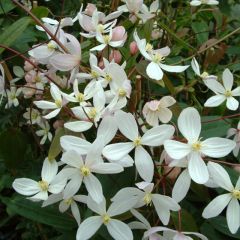
Clematis armandii Apple Blossom
- Flowering time April, May
- Height at maturity 4 m

Clematis flammula Aromatica
- Flowering time August to October
- Height at maturity 1,50 m
To learn everything about clematis, check out our complete guide: Clematis: Planting, pruning, and maintenance.
Mimosa
Mimosas (Acacia) are small trees or large bushes with rapid growth, suited to mild climates. They produce clouds of highly fragrant yellow pompom flowers at the end of winter. Their evergreen foliage is finely dissected, resembling ferns. The hardiest of all is Acacia dealbata. It offers a honey scent and can withstand temperatures down to -10°C once well established.
Where to plant them?
Mimosas thrive in sunlight. A warm, dry climate in summer provides favourable conditions for their flourishing. They also require well-drained soil and are more or less tolerant of lime depending on the species. They can be planted individually, in groups, as hedges, and as privacy screens due to their screening ability, or in borders. In colder regions, they can be grown in pots, protected from winter frosts, allowing you to enjoy their wonderful fragrance.
Our favourite varieties:
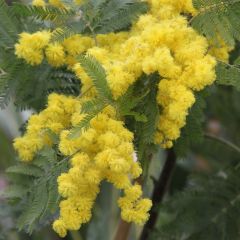
Acacia dealbata Gaulois Astier
- Flowering time February to April
- Height at maturity 5 m
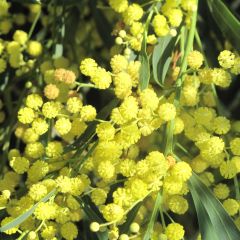
Acacia retinodes Lisette
- Flowering time June to December
- Height at maturity 4 m
Sarcococca
Between January and March, these evergreen bushes are covered in small star-shaped cream flowers. They emit a powerful vanilla scent mixed with a hint of jasmine. Slow-growing, these very fragrant white-flowered bushes are easy to grow and require little maintenance. They can effectively replace boxwood in dense shade areas, under trees.
Where to plant it?
The Sarcococcas prefer light, cool, humus-bearing, and non-calcareous soil. They are perfect for enhancing a woodland area alongside shade plants, for edging a path to enjoy their fragrance, or even as a low hedge. They can also be planted in pots.
Our favourite species:
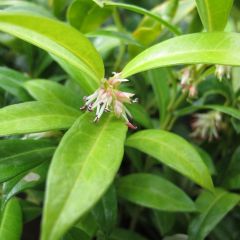
Sarcococca hookeriana humilis
- Flowering time February to April
- Height at maturity 60 cm
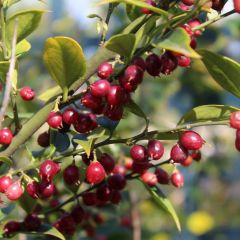
Sarcococca ruscifolia
- Flowering time February, March
- Height at maturity 1 m
To learn everything about sarcococcas, check out our guide: Sarcococca: how to grow and prune it.
Gardenia
Gardenias are among the most fragrant flowering plants. They are evergreen bushes with cream or white flowers, commonly found in gardens in warm countries. Their long flowering period occurs from May to September.
Where to plant them?
Gardenias thrive in a humid and mild climate, in fertile soil that is low in lime or lime-free. They require a very bright location without scorching sun, and cold drafts should be avoided. In colder regions, it is more sensible to grow them in pots that you can protect from frost in winter. In mild climates, they can be planted in the ground, either isolated or in groups, accompanied by ericaceous plants.
Our favourite varieties:

Gardenia jasminoides Kleims Hardy
- Flowering time June to November
- Height at maturity 80 cm
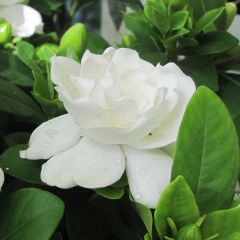
Gardenia jasminoides Crown Jewel - Cape Jasmine
- Flowering time June to October
- Height at maturity 1 m
Lilac
Mock oranges (Philadelphus), sometimes referred to as Poet’s jasmine, are bushes with very fragrant white flowers, either single or double. The flowers that appear in spring are often scented, even enchanting, particularly in the evening. These are fast-growing, cosmopolitan, and very hardy bushes that acclimatise well everywhere. Their arching branches give them great elegance. Some varieties have decorative foliage, such as Philadelphus coronarius ‘Variegatus’ with its magnificent green foliage variegated with cream, or Philadelphus coronarius ‘Aureus’ with its golden foliage.
Where to plant it?
Hardy and undemanding regarding soil type, they bloom best in sunny locations. They are stunning when planted alone but can also find their place in a border or a flowering hedge.
Our favourite varieties:
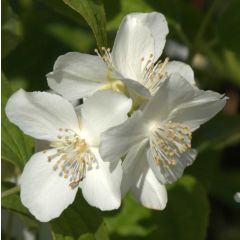
Philadelphus coronarius - Mock Orange
- Flowering time June, July
- Height at maturity 2,50 m
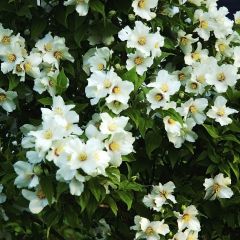
Philadelphus Belle Etoile - Mock Orange
- Flowering time July, August
- Height at maturity 2 m
Jasmine
Jasmines are climbing plants with woody climbing stems or voluble habits, featuring deciduous, semi-evergreen, or evergreen foliage and star-shaped flowers that are white, pink, or yellow depending on the species. The most common among the fragrant jasmines is the Star Jasmine (Trachelospermum jasminoides), whose flowers emit a powerful spicy and sweet fragrance in June/July.
Jasminum officinale is a plant renowned for its unique and recognisable fragrance. Its small star-shaped flowers appear in abundance in July, followed by discreet waves throughout the summer.
Where to plant it?
Not particularly demanding regarding soil type, this plant requires well-drained soil and a sunny position. The star jasmine is hardy down to -10°C, and even -15°C under favourable conditions, such as a well-exposed location and draining soil. It produces voluble stems that can cling to their support like ivy. With low hardiness, the white jasmine should be planted in a sheltered position in regions with harsh winters. Less voluble, the latter requires careful training. They will thrive on a trellis, a fence, a staircase railing, on an arch, and in pots on a terrace to indulge in their fragrance on summer evenings.
Our favourite variety:
Jasminum officinalis Aureum - Common Jasmine
- Flowering time July to October
- Height at maturity 4 m

Trachelospermum jasminoides - Star Jasmine
- Flowering time July to September
- Height at maturity 6 m
→ Learn more in our advice sheet How to choose a jasmine?
- Subscribe!
- Contents































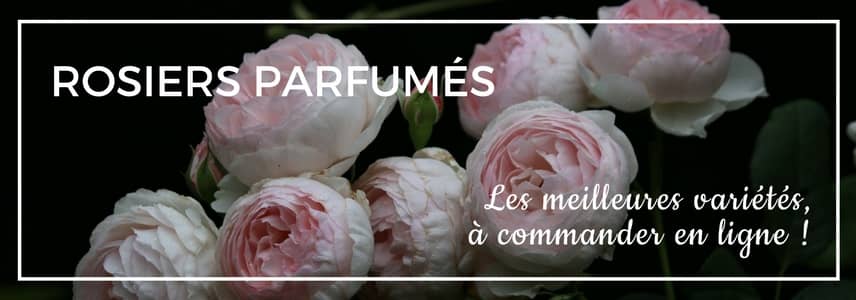
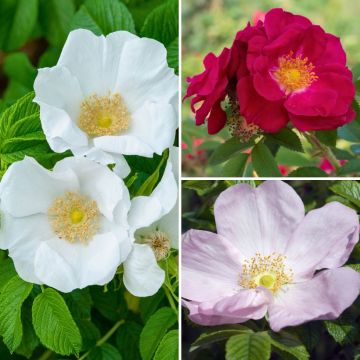
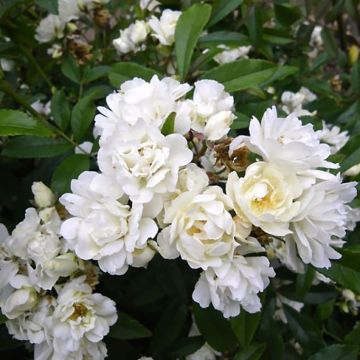
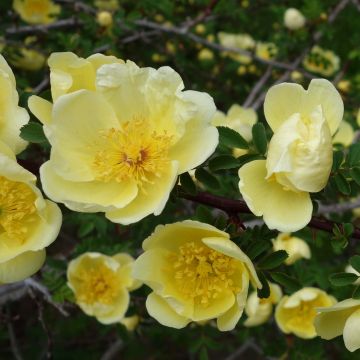

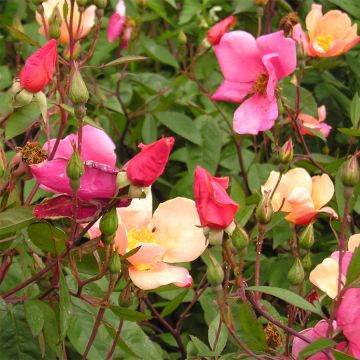
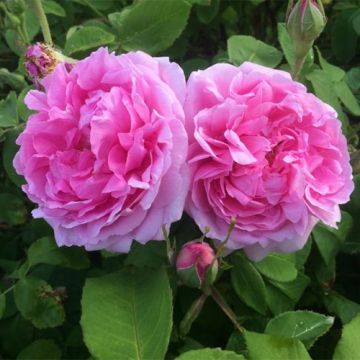
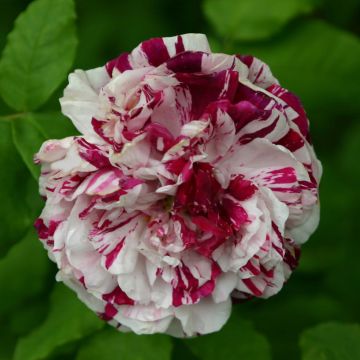
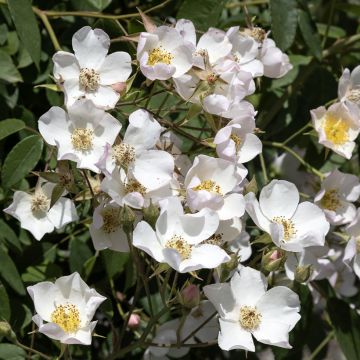
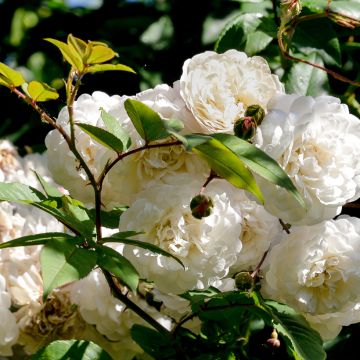

Comments